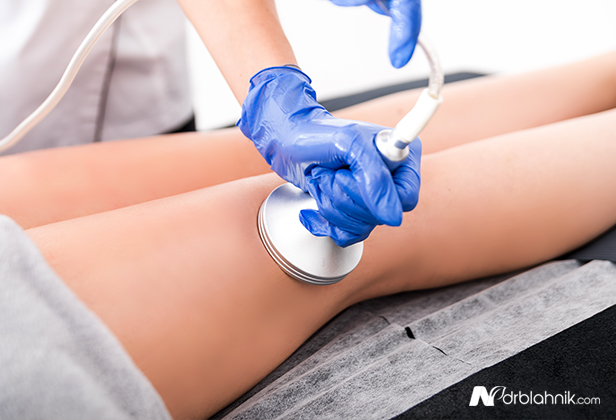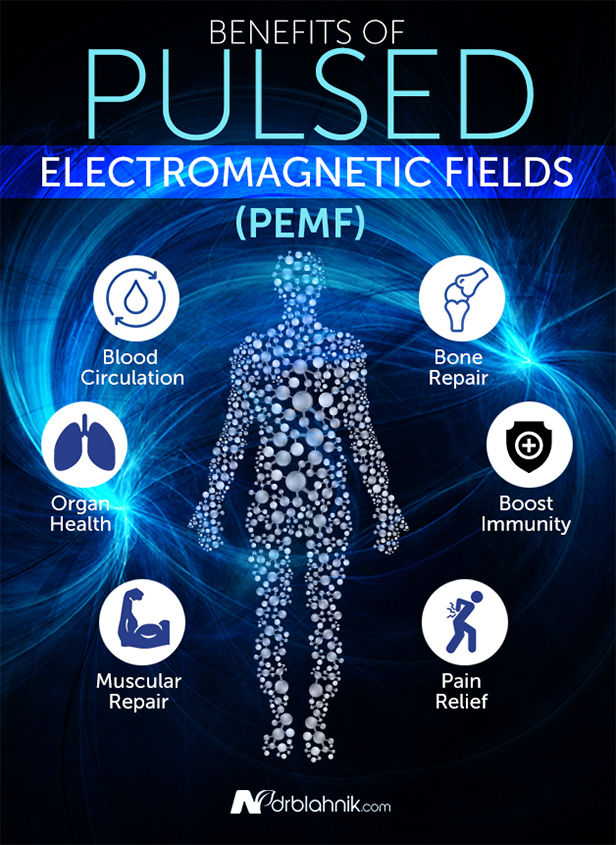If you have ever played a contact sport or performed any sort of strenuous activity, you have likely found yourself to be rather sore shortly afterward. The strain to muscles during heavy effort can be unbearable as time goes on, especially if you work in an environment where manual labor is a constant issue. In fact, chronic pain is one of the most prevalent conditions in the United States.
When you’re sore after strenuous activity, the first reaction you may have is to go for your trusty bottle of aspirin in the bathroom cabinet or visit your local chiropractor for an adjustment. However, there are alternatives that may provide not only relief but long-term resilience to the pain you feel.
What is Shockwave Therapy?
Shockwave therapy goes back 41 years to 1980 as Extracorporeal Shockwave Therapy (ESWT), which was created by Frank Rieber as a treatment to break down kidney stones. The method used high-energy sound waves produced underwater to non-invasively target and break down obstructions in the patient’s kidneys, gallbladder, and other internal organs for lithotripsy.
However, in the last couple of decades, the procedure has been repurposed for musculoskeletal treatments, including pain management. Using an acoustic wave to carry energy to sore or painful spots affected by chronic issues, regenerative effects can be produced due to the stimulation. In essence, exercising the internal tissue causes it to start repairing and reinforcing itself in the same way athletes train their muscles to heal and reinforce with intense workout regimens.

The process involves a trained therapist locating the affected area to determine the exact point of treatment before applying a specialized gel to that part of the patient’s body. The gel allows the efficient transfer of the acoustic waves past the dermal layer of the body and to the affected sub-dermal location. Once the gel has been applied, a device called a shockwave applicator is gently pressed against the gel-coated area and activated to begin sending acoustic waves through the gel and to the affected region.
What Does Shockwave Therapy Treat?
The first question you might be asking yourself is, “what does shockwave therapy treat?” Well, in its 41-year lifespan, shockwave therapy has been used to treat chronic pains that affect several body parts. Some targeted conditions include:
- Patellar Tendonitis (Jumper’s Knee): Jumper’s Knee is a painful inflammation of the patellar tendon that connects your kneecap to your shinbone and can tear the tendon if left untreated.
- Lateral Epicondylitis (Tennis Elbow): Tennis Elbow is another tendon-based issue that occurs when the tendons in the arm are overloaded due to the repetitive wrist and arm motions.
- Chronic Tendinopathy: A condition of long-term inflammation and damage of tendons that connect your muscles to your bones, primarily from overuse.

These are only a few of the conditions treatable by shockwave therapy. Other, more mundane conditions, such as some chronic back, shoulder, and hip pains, can be treated using shockwave therapy to alleviate the symptoms.
Who is Shockwave Therapy For?
While you might be thinking that shockwave therapy for conditions like muscle pain might be reserved for athletes, you would be wrong. While many athletes absolutely enjoy the benefits of the treatment for injuries they suffer on the field of play, shockwave therapy is also applicable to more mundane conditions.
An excellent example of a specific injury that enjoys the benefits of shockwave therapy that non-athletes can suffer is Tennis Elbow. Despite the name, Tennis Elbow is an affliction that manifests in anyone who overloads their tendons. As the name implies, these overloads can occur from playing sports like Tennis or Baseball but is also a risk for those who spend a great deal of time on the computer. While this condition is colloquially referred to as “computer elbow,” it is the same condition as Tennis Elbow and equally treatable with shockwave therapy.

Tennis Elbow is also common in manual labor-based positions like carpentry, butchers, artists, and many others, making shockwave therapy an excellent recourse for the afflicted. In fact, some versions of shockwave therapy are even used in veterinary practices, making it one of the few treatments that can effectively cross the species barrier.
Does Shockwave Therapy Work?
The most important question to ask when it comes to shockwave therapy is, “does it work?” Fortunately, shockwave therapy has been around long enough to have been thoroughly tested, and the results of these tests have been documented per the scientific method. The National Center for Biotechnology Information (NCBI) has conducted studies to determine how safe and effective shockwave therapy can be in contemporary practices.

In 2018, the NCBI conducted a study into the pain intensity, functionality of limbs, and quality of life of a patient before and after being treated with shockwave therapy. A sample pool of 384 patients suffering from tendinopathy was divided into a control group and a test group. The group’s results were measured with a point system on the 5-point Likert scale to measure the quality of life of post-treatment.
After the 4-week follow-up period with patients, it was determined that the quality of life, pain reduction, and limb functionality of those treated with shockwave therapy increased by 2 points on the scale. This proved that the shockwave therapy treatment successfully treated the tendinopathy the subjects suffered from and effectively reduced the pain for patients in the long-term.
The NCBI even did a separate study to determine the efficacy of radial shockwave therapy specifically for chronic lower back pain. Like the study conducted for general chronic pain, the lower back study was extremely successful. Thirty-seven patients were divided into test and control groups, with the control group being subjected to a placebo. Of the patients treated with RSWT, their pain level dropped on the Laitinen Pain Scale from a 6 to a 5 immediately after and down to a two after the 3-month mark.
Alternative Forms
While shockwave therapy is certainly a specialized form of treatment, it is also a multifaceted one with variations designed for different conditions and patients. In fact, we use and recommend two of these alternate shockwave therapy mediums ourselves.
Radial Shockwave Therapy (RSWT):
RSWT differs from ESWT in how it sends the acoustic waves through the patient’s body. While ESWT is more of a direct approach, sending a single intense wave to a specific part of the body at a specific tissue depth, RSWT is more like a series of waves. It releases the short pulses at intervals, allowing them to spread from the contact point and further into the tissue by bouncing the skin with a pressure wave device.
RSWT is oriented towards superficial injuries as opposed to ESWT’s function for treating deep tissue injuries. This means that RSWT is ideal for treating conditions like:
- Achilles Tendinitis
- Patellar Tendinitis
- Quadriceps Tendinitis
- Tennis Elbow
- Golfer’s Elbow
- Biceps/Triceps Tendinitis
- Rotator Cuff Tears
- Trochanteric tendonitis
- Plantar Fasciitis
- Shin Splints

RSWT reminds the body to heal when dealing with chronic pain that it otherwise learns to ignore. By ignoring the pain, your body stops trying to heal it. RSWT’s wave pulses, while administered slightly differently from ESWT’s shockwave, accomplish the same result for chronic injuries or conditions that cause pain closer to the surface of the body.
Like ESWT, RSWT enjoys a high success rate of between 72% to 80% and offers a long-term and more financially viable alternative to mainstream physical therapy treatments. According to an assessment by Orthopaedic Specialists, the six-week hour-long sessions at a physical therapist’s clinic run co-pays of at least $40.00. That kind of pricing can add up to a total of $600.00 out-of-pocket co-pay, whereas the average cost of RSWT treatments cost less than the total co-pay of physical therapy.
Pulsed Electromagnetic Fields (PEMF):
PEMF is unique from other shockwave therapy treatments in that its origins predate the invention of ESWT and go back to the year 2000 B.C. The original treatment made use of magnetic rocks that were described in the Huangdi Neijing (Translated as The Yellow Emperor’s Classic of Internal Medicine). This ancient treatise was allegedly drafted by former Chinese emperor Huangdi. In modern practices, PEMF is used as a more generalized treatment.
Rather than being used as a medium for targeting specific chronic pains and injuries, PEMF is used to optimize our body’s capacity to heal itself and increase its ability to fight conditions like arthritis, chronic pain, and other issues requiring specific treatment. PEMF recharges the millivolts of our cells, which are designed to run anywhere between -20 and -25 millivolts, and suffer when falling below -15 millivolts. This makes PEMF a cellular rejuvenation and healing technique to promote a healthier body.

Like RSWT, PEMF differs from ESWT:
- Unlike ESWT and RSWT, which require a gel conductor, PEMF does not require preparatory measures and is administered directly to the skin.
- PEMF can be applied to the entire body as opposed to the targeted locations of ESWT and RSWT.
- PEMF is used to recharge the body’s cell millivolts to give the body the energy it needs to heal itself, whereas ESWT and RSWT instead work the body’s inflammation response to trigger the healing process directly.
- PEMF sends energy into the body to recharge it with pulsed electromagnetic fields, whereas ESWT and RSWT use acoustic waves to treat tissue injuries.
- ESWT and RSWT require licenses to practice, whereas PEMF can be performed without any form of official licensing.
- PEMF reduces inflammation, whereas ESWT and RSWT induce it.
It might seem like PEMF, given its origin, might be considering something of a “snake oil” scam. At the very least, you probably think that it can not be as effective as the other two shockwave therapy treatments. However, studies conducted by NCBI have proven its efficacy against conditions such as fibromyalgia.
Overlap
While it may seem unusual, it is possible to use multiple forms of shockwave therapy to treat the body simultaneously. Dr. Stuart Brown, a podiatrist, has a clinic that offers shockwave therapy and often recommends that his patients visit his other clinic to receive both RWST and EWST in conjunction.
By combining ESWT and RSWT, clinics can treat deep tissue injuries from chronic conditions as well as any superficial damage caused on top of the injury. Doing so allows a patient to enjoy a more complete healing and long-term relief on injuries that have affected them in ways they may not have been aware of before treatment. If a chronic condition is causing pain in your deep tissue, that pain will likely be more intense and drown out any surface-level pain that may not be apparent until that deep tissue pain has subsided.

“I have 2 clinics that use Shockwave, one has focused and radial devices and the other only radial. Despite the clinic with the only radial being a multi-disciplinary clinic treating elite professional athletes, including premier league footballers, and having luxurious surroundings, I feel totally insufficient there because the focused device is at my other clinic. I know I can offer better treatments when having the focused device, it’s just not the same with only radial, I end up advising all the patients to go to the other clinic for better results no matter what part of the body. Focus can treat things that radial can’t and combined the two modalities are even better!”
Helen How, another clinician, also endorses the multi-pronged approach of simultaneous ESWT and RSWT to treat both deep and superficial injuries.
“As a combination therapy, Focused shockwave with Radial is providing my patients with outstanding results. I already have numerous case studies from using the device after only a few months. I treat a lot of runners and thanks to our excellent success rate with Focused, the focus shockwave therapy word has spread through the running community in my area. It’s not only runners I have had great success with, one chap who suffered terribly with back pain is now enjoying his passion of Golf.”
The Shock(wave)ing Conclusion
While shockwave therapy may not be a mainstream treatment option for long-term chronic pain, the results of the treatment speak for themselves. Offering treatment for a wide range of conditions, an excellent success rate, and a financially viable option for treatment make shockwave therapy extremely appealing.
If you are waking up in the morning with pain and aches that go back as far as you can remember, it might be worth looking into shockwave therapy treatments to alleviate your symptoms.





